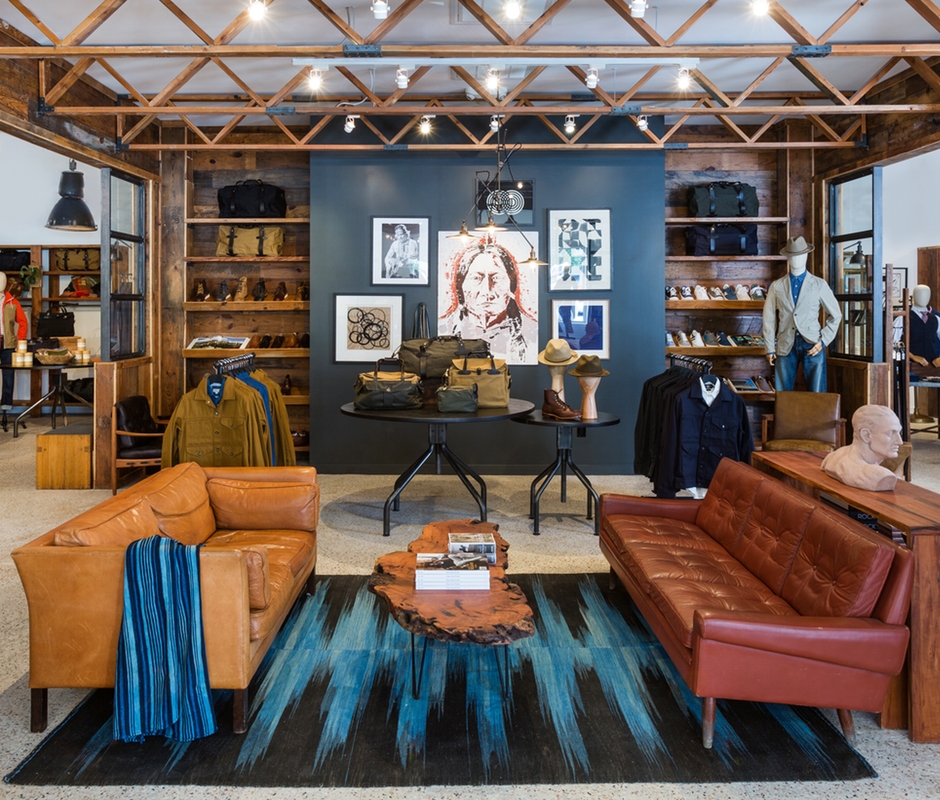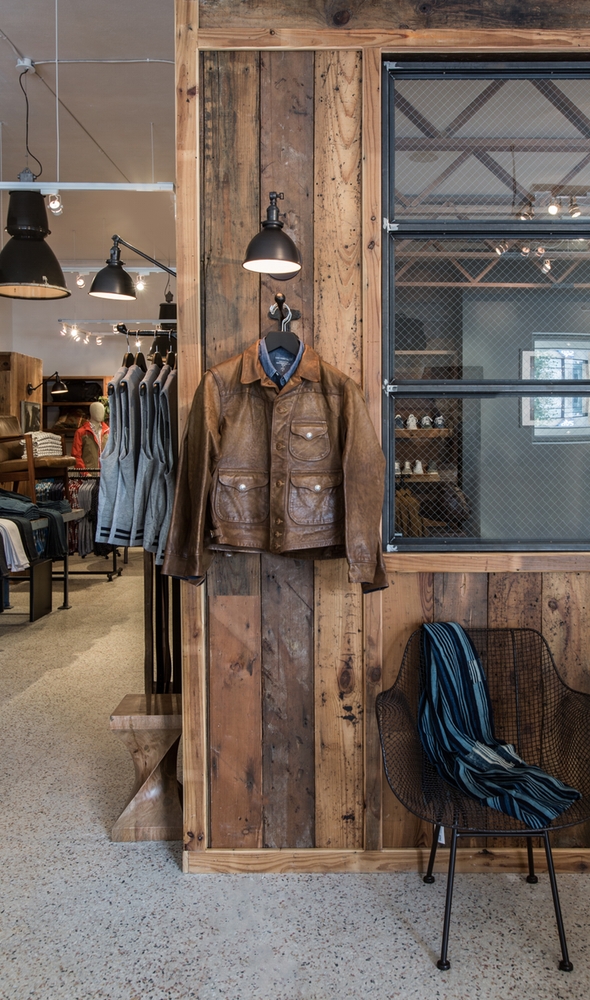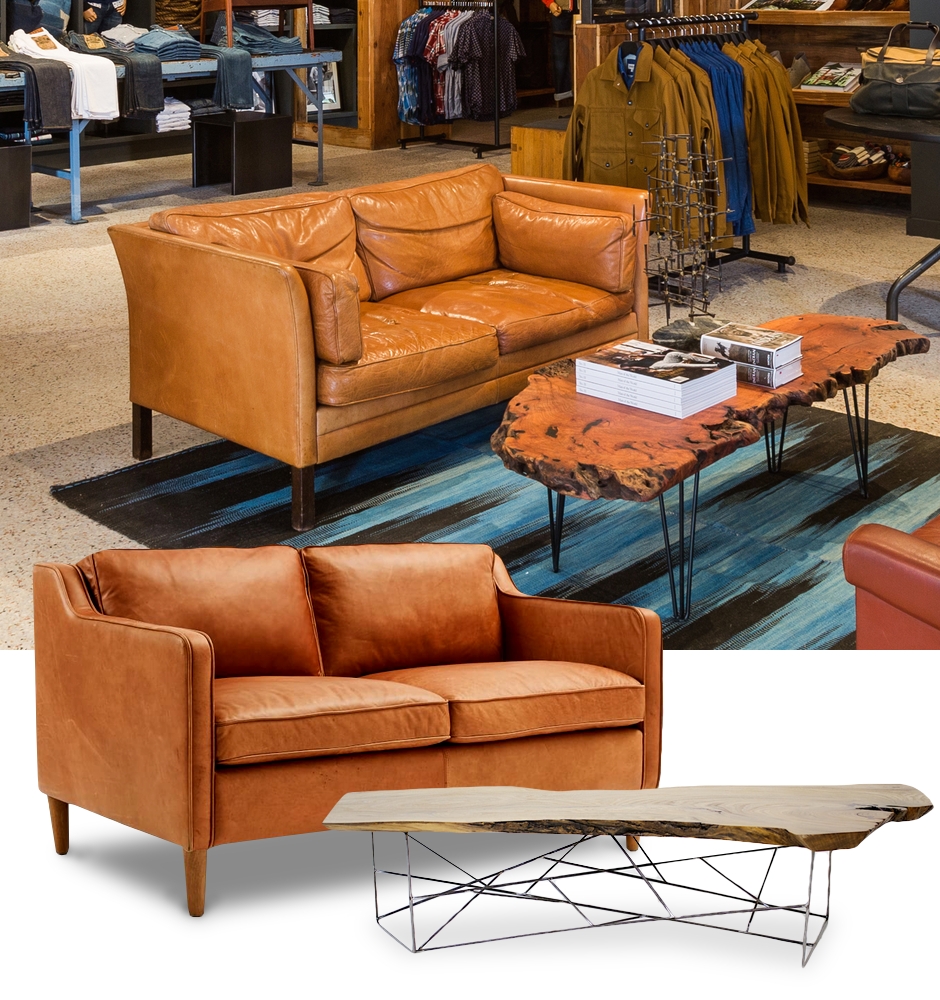Stag, the men's retailer with outposts in Texas and California, just opened their fourth store, this time touching down in Houston (2614 Westheimer Road). The handsomely designed space is a red-blooded salute to a laid back American aesthetic—masculine, utilitarian and filled with well-made and durable pieces. "Each store is a little different, but they all draw on the same design influences," says co-founder Don Weir. "It's a little bit rustic, a little bit industrial with a few mid-century influences thrown in there for good measure." And it turns out, this game plan isn't just ideal for creating a comfortable place to shop, it's also a smart way to design a place to live. Incorporate Stag's style into your own home with these simple tips and some pieces inspired by the shop's unique vintage finds.
Swipe
Stag's
Interior
Style
The key to a good art wall

"We don't get too caught up on rules of symmetry but play a lot with color and proportion to create interesting compositions," says Weir. "This approach makes it far easier to introduce an array of new work and styles into the mix too."
Hand-painted cactus, $110 by Kristina Micotti
"Intersect" laser-cut print, $100
by Molly McGrath
Lighting is critical

"We layer the lighting in the shop so you get a good balance of different lighting in every area. The big pendant lights that we used throughout the store are Czechoslovakian factory lights from the 1950s—we're suckers for anything with some history and a little bit of wear and tear."
Bronze desk lamp, $200 by Rejuvenation
Pendant lamp, $69.99 at Ikea
Biscayne wire chair, $625 (for a set of two)
at Iron Accents
Carved wood side table, $189 by Strata
Weir's favorite piece?

"The small, mid-century Dutch leather sofa. It's a rich, caramel color that's tough to find, and it's been well-loved over the years but is still in great shape."
Leather sofa, $1,999 by West Elm and live edge slab coffee table, $899 by ModernCre8ve
Tip
Use paint to give the illusion of a bigger room by painting one wall a color, and the others a lighter shade. This tricks the eye into believing the space is larger.